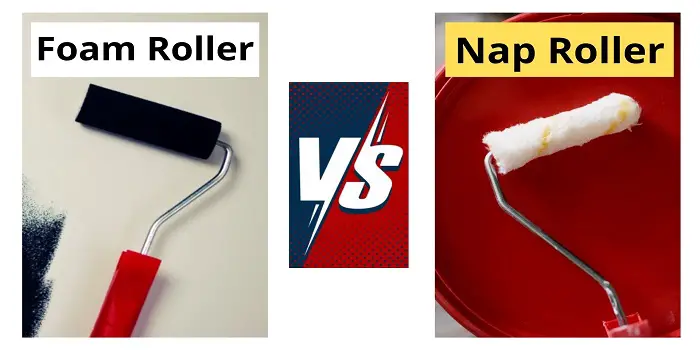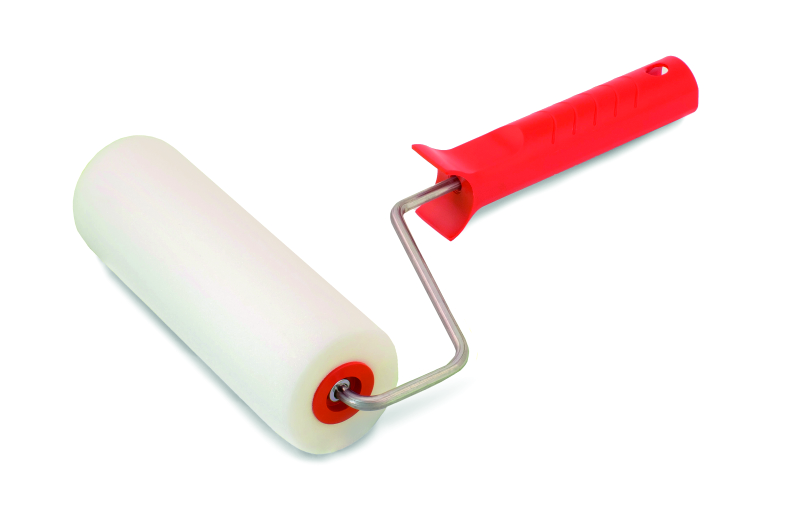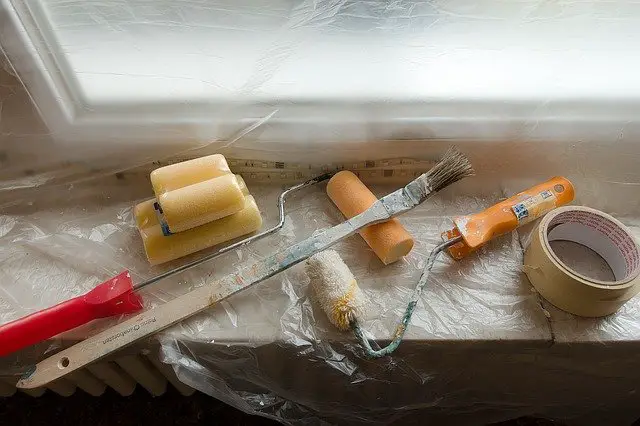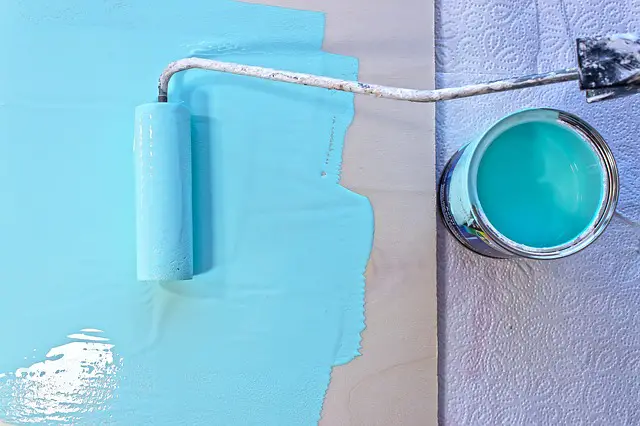If you have an interest in painting for a living or just painting your home by yourself, then you’ve probably wondered which paint roller you should use.
Choosing a paint roller requires an understanding of various factors, one of which is the paint job you want to accomplish.
The foam paint roller is made using a special type of foam. Due to its tiny nature, it works well with latex, glossy, and semi-glossy paints. It is suitable for doing specific painting jobs and it is less expensive than nap rollers.
The roller works well when painting smooth surfaces because it absorbs paints uniformly. It is a budget-friendly variant that should be considered for a large painting project.
When to Use a Foam Paint Roller
Use a foam paint roller when you need to paint smooth interior walls. It absorbs paint well and evenly distributes it. Since it’s a good paint absorber, it can take a large amount of paint, which helps you to cover a larger surface in a short time.
How to Use a Foam Paint Roller
To use a paint roller, apply paint on it just the way you’ll do to a regular paint roller. Use the roller to go over the surface twice. This is to ensure that you’re uniformly painting the entire wall.
Then, go over the wall a third time without pressing the roller against the wall. This makes the wall smooth without too much paint on a particular spot.
Foam Paint Rollers Vs Nap Rollers

There are various options of rollers to choose from. The most common ones are foam roller and nap roller. We’ll discuss both of them in detail in this section.
Foam Roller
As the name implies, it’s made with a solid foam-like spongy material. This foam is soft and porous, making it possible to absorb much paint. The grips of foam rollers are mainly manufactured from wood. Some are, however, made from plastic.
Foam rollers are very easy to use, so they are suitable for people who are learning to paint.
Nap Roller
It is made of various types of threads and strings and is recognized for its fiber length. The fibers of this brush are either natural or artificial.
The artificial fibers are made from nylon or polyester and they ensure consistent coats are painted. Their grips are usually made from wood or plastic.
Factors to Consider Before Choosing a Roller
The following are what you should consider when deciding the type of roller to use. They will help you to make the right decision and get better results.
- Your budget
- Type of paint
- The surface you want to paint
- The size of the surface
What Makes a Foam Paint Roller Different from a Nap Roller?
- Price
Foam rollers are far less expensive than artificial and natural nap rollers. This is because the strands used to make the nap rollers are tough to get and manufacture.
- Sturdiness
The low-quality foam rollers are mainly used once because they don’t last long, unlike the nap rollers. High-quality foam rollers can be used more than once and for a longer time.
Nap rollers can be cleaned consistently for a long time before they need to be changed. They lose value when they’re used for a long time in hot weather conditions.
- Paint Type
You can use foam rollers with gloss or semi-gloss latex and water-based paint as well as stains. But you can’t use them with oil-based paint.
For nap paint, the type of paint you can use depends on the type of fiber.
- A synthetic fiber nap roller can be used with latex or water-based paint, varathane, polyurethane, polyacrylic, and other polish, especially when made from nylon or polyester. It is also not a bad option for oil-based paints.
- The natural fiber nap roller can be used with oil-based paint or staining
- Brush Lashes
The foam roller gives the painted surface a neat and even look. On the other hand, the nap roller will show marks on the painted surface, especially if you use latex paint.
- Nature of Surface
Foam rollers can be used to paint smooth walls like the interior walls of the house. They make the job look beautiful with even coats.
However, the nap roller is better suited for rough or irregular surfaces like ceilings. This is because its diverse strand lengths leave marks from the roller and makes the paint on a smooth wall look bumpy.
- Absorption of Paint
The spongy material of the foam roller allows it to absorb liquids evenly and take up a greater bulk of paint, unlike the nap roller that has spike-like fibers.
- Surface Coverage
The foam roller can hold enough paint at a time to make it easier to cover more ground faster. This is not so with the nap roller.
- Size and Thickness
Foam rollers come in broader sizes than nap rollers. However, nap rollers have different thicknesses and depths with each size made for particular purposes. This is not so with foam rollers.
The thickness of nap rollers is indicated on the body but that of foam rollers cannot be determined.
Advantages of Foam Paint Rollers

- Affordable
Foam rollers are not expensive; they are very affordable and budget-friendly.
- Smooth Paint Jobs
The smoothness of the foam roller’s external surface and its ability to absorb paint quickly makes it possible to paint uniformly and smoothly. This makes the outcome look neat and stunning.
- Larger Surface Coverage
The ability of the foam to absorb fluids also makes it less stressful to take up a larger volume of paint. This prevents you from having to dip the roller inside the paint tray or bucket over and over again. This way, it’s easy to cover a vast surface at a faster rate.
- Prevents Wastage
They can hold liquid properly without drips. This prevents paint wastage.
- Painting Edges
The smaller foam roller can be used to paint edges neatly and evenly than that of the nap roller.
- Paint Type
A foam roller can be used with virtually any type of paint except oil-based paint.
Disadvantages of Foam Paint Rollers
- They are not easy to clean; they tear off rapidly when washed
- Foam brushes don’t last long
What Makes a Foam Paint Roller High Quality?
Getting a good foam paint roller requires the knowledge of what makes it good. A high-quality foam roller should have a water-resistant plastic or a phenolic base.
The plastic prevents the foam from absorbing water, thereby preventing water from mixing with the paint.
The phenolic base is essential because:
- It gives a solid connection that makes the roller steady without the risk of being slack or getting removed while you paint. This will make the roller last much longer and provide a superior and trustworthy result even as time passes
- A foam roller with a phenolic base has a better form and functions well when used
Below are the benefits of a good foam roller.
- It prevents air bubbles from being trapped as you paint, unlike those of low quality
- It makes painting less stressful and less time-consuming
- A good foam roller ensures that your outcome is neater and better
- It allows you to clean with much ease and speed
Nevertheless, you have to be aware that these high-quality foam rollers are more expensive. Still, they are worth every penny you spend.
When Should You Use a Foam Paint Roller?

Foam rollers are good to use but they function best in certain situations. Use foam paint rollers for the following.
- Coating a Large Surface
They readily absorb the paint, making it possible for you to take up enough paint at once. This makes it easier to cover a bigger surface swiftly.
- Thin Paintings
They’re suitable for painting with thin paint because the foams effortlessly and rapidly absorb fluid and the smoothness of the external surface of the foam ensures the fluid is dispersed uniformly. They can be used when you want to use a semi-gloss latex, gloss latex, or water-based paint.
Using this foam with thin paint will not leave marks on the walls, thereby making the outcome neat.
- Coating an Even Surface
The absorption ability of a foam roller makes it most suited for painting an even surface. If what you’re looking for is a well-finished and smooth paint job, the foam roller slides along and distributes paint consistently.
- Trim Edges
Trims are minor foam rollers used for slim edges, details, and different smaller spaces. They come in 3 and 4 inches. By using a trim foam roller, you can apply a beautiful and uniform coat at the very first go.
- Brief Usage
The brushes are not durable, so they cannot be used for a lengthy time. They are good when you don’t plan to use them often.
When You Should Not Use a Foam Roller
In as much as there are situations these brushes are a perfect choice, there will be circumstances they should not be used. Don’t use a foam brush in any of the following cases.
- Painting a Coarse and Bumpy Surfaces
A coarse wall or popcorn ceiling squeezes paint from foam brushes and makes them trickle.
- Using an Oil-based Paint
Foam brushes don’t absorb the oil completely, so using them with oily paint will cause the result to look irregular. You don’t want bristles or marks to show on your wall after painting.
Final Notes
In a nutshell, foam rollers are not as bad as they are said to be. Their spongy material gives them an edge over other types of rollers. However, be sure of the paint and surface you want to use it on before getting one.
Related
- Shadow Box Fence Pros and Cons
- Top 5 Freeman Framing Nailers Review
- Shadow Box Fence Vs Board on Board Fence (Side by Side Comparison)
- Board on Board Fence Pros and Cons
- Top 5 Types of Pillowcase Closures


